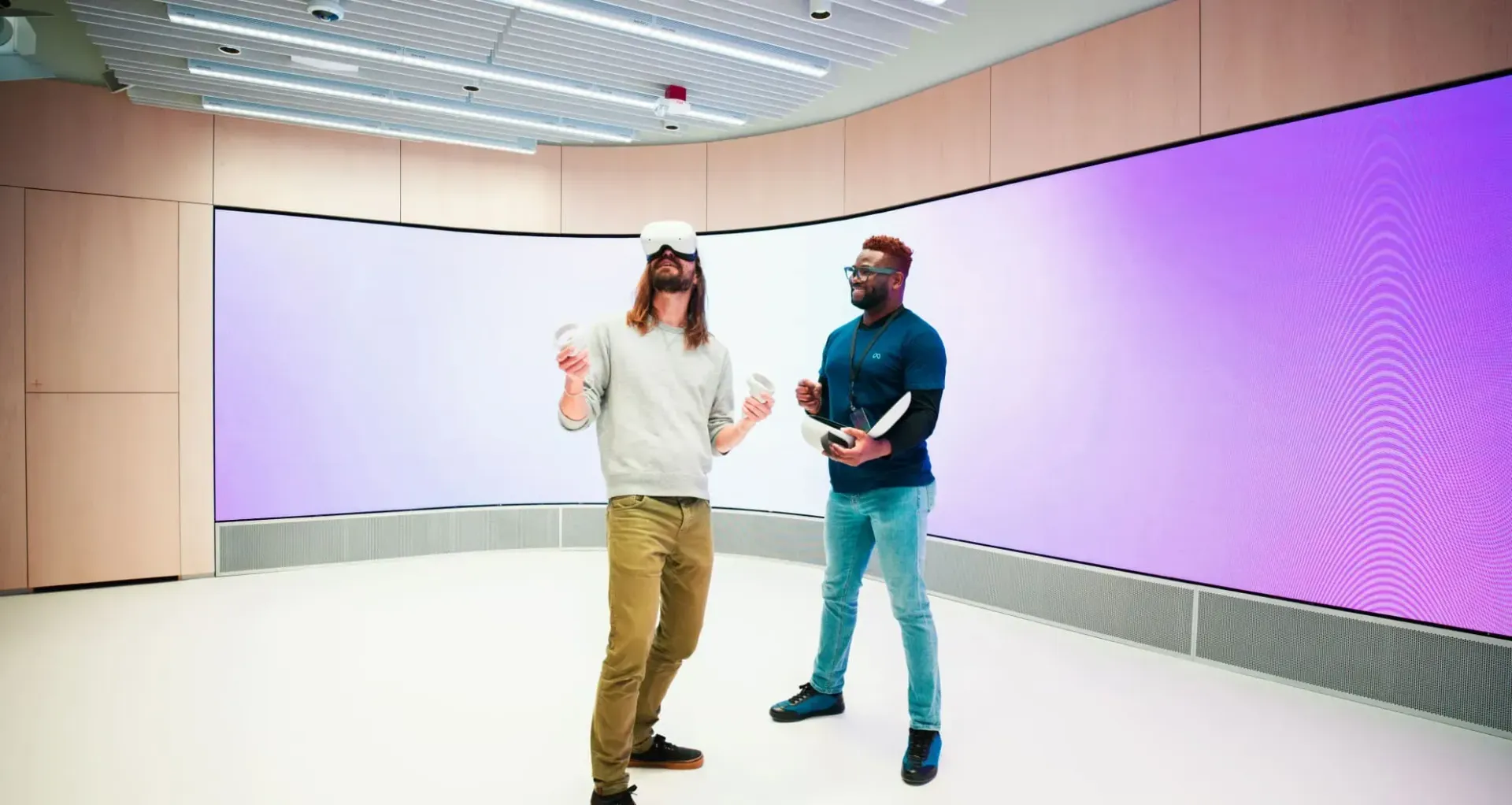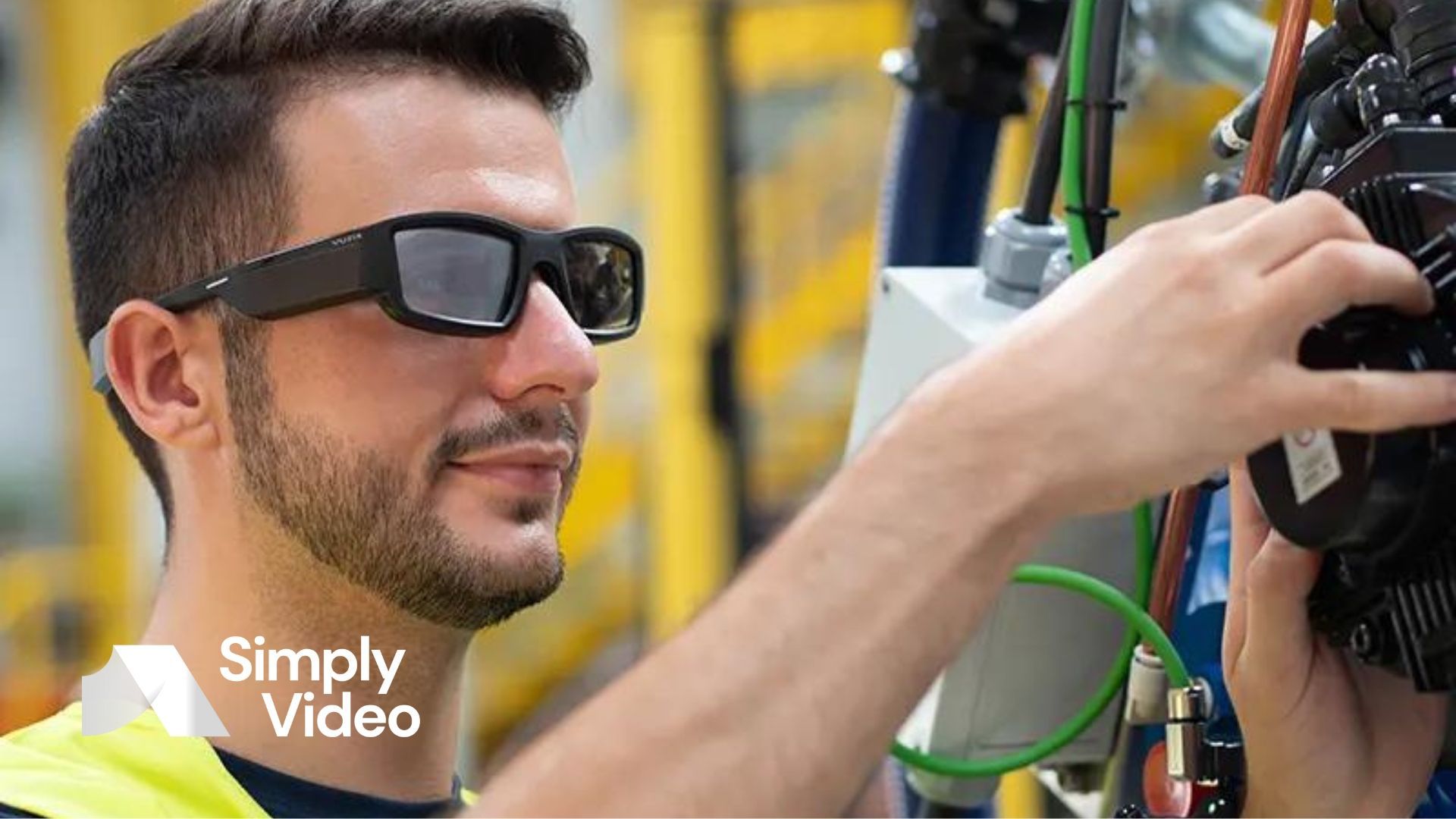How to make Microsoft Teams work better on the frontline
Your business uses Teams, but you need an XR-ready video solution for frontline staff. Should you stick with Microsoft's apps or is there a better solution?

Are you interested in deploying extended reality (XR) technology in your business, but are worried about integrating it with your Microsoft ecosystem? Read on – we've got good news for you.
Solving the desk problem
Here at SimplyVideo, we spend a lot of time thinking about a particular problem. It's a problem that plagues enterprises and SMBs alike. Yet – get this – many managers are unaware that the problem even exists.
Let's call it "the desk problem".
See, we've experienced a sea change in workplace communication. It's now considered completely normal to hold important meetings via video call. It's
de rigueur
to share documents in the cloud. And if you're not using live chat, we can only assume you're reading this through a time warp from 2006.
What does this have to do with desks? Well, these perks of corporate communication have typically been reserved for office staff. The workers lucky enough to have a PC and a bit of wood to stand it on.
The deskless workforce – your colleagues out in the field or on the factory floor – aren't afforded this privilege. They can't join video calls or access documents without fumbling with a smartphone – and that's not really feasible when you're climbing a ladder or crawling underneath a piece of machinery.
The answer, as you might have guessed, is XR. Using extended reality devices, frontline teams can access all the tools their desk-based colleagues enjoy. This includes video conferencing, live chat and cloud document delivery.
And better still, they can access these tools hands-free. Most XR devices support voice commands, so your frontline workers can dial into a call or open a document, even if they're in the thick of a tricky job.
Problem solved, right? Not quite. We'd be the first to acknowledge that there are obstacles to overcome in XR adoption – not least the problem of integrating XR technology with your existing software ecosystem.
However, every problem has a solution. (Except for
Goldbach's conjecture. But this isn't a mathematics blog, so we'll save that for another day.)
Solving the integration problem
Let's say, like
48% of global users, you rely on the Microsoft 365 office suite to get things done. This includes software like Word, Excel and the communications app Microsoft Teams.
Your workforce is comfortable with Microsoft's ecosystem. Your marketing team taps out copy in Word. Your sales staff are dab hands at creating PowerPoint presentations. And everyone uses Outlook for emails, OneDrive for cloud storage and Teams for video meetings.
In many ways, this is good. Sticking to one suite of software helps keep staff productive. Everyone's on the same page – and that page has a big Microsoft logo at the top.
But it presents challenges whenever new technology is brought on board. Will that new CRM system or finance solution integrate with Microsoft's apps? Can it infiltrate Microsoft's walled garden, take it by the hands and play productivity hopscotch like they've been friends for life?
And – more to the point – does it integrate
well? It's no good bringing a new solution on board if its so-called Microsoft integration only creates more headaches for users. If – to labour the metaphor – it trips Microsoft up, scrubs out the hopscotch squares and breaks a window for good measure.
Solid integration is particularly important with a bleeding-edge technology like XR. Most users will have little to no familiarity with XR tech. Educating them on the intricacies of the hardware
and
asking them to adapt to a new ecosystem might be one demand too many for workers who just want to get their jobs done.
It's important to get the balance right, especially for a first-time XR deployment. So what are your options?
Option one: use Microsoft apps
The most straightforward solution, one might assume, is to use Microsoft's own apps on your XR devices.
Microsoft's own HoloLens 2 now
includes full Teams integration. And many Android-based XR devices, such as RealWear's HMT-1, support standard Android apps – including Microsoft's mobile versions of Teams, Outlook and Office.
This has the benefit of familiarity. Staff can use the same old interface with the same old buttons and the same old Microsoft branding. Many users are resistant to change, so a well-trodden UI might help them adapt to a new and unfamiliar device.
But there are drawbacks. We're not here to knock Microsoft's software in particular, but – generally speaking – most mobile apps aren't built to take advantage of XR's strengths. Many aren't even optimised for head-mounted devices. This lack of optimisation can lead to visual oddities and snags in the user experience.
Option two: use SimplyVideo
SimplyVideo, our remote collaboration and videoconferencing solution, is built from the ground up for XR wearables.
This means users are guaranteed a smooth and productive experience. They can take complete control of the app with voice commands. They can enjoy XR-first features like in-call annotation and low-bandwidth streaming. And they can do all this without the quirks that plague under-optimised mobile software.
The best bit? SimplyVideo integrates beautifully with Microsoft Teams – as well as other Microsoft productivity apps such as Edge and Outlook Calendar.
This isn't a half-baked integration, either – Teams is natively integrated into SimplyVideo. This means XR users can dial into Teams calls directly from their SimplyVideo application. Your office staff can continue using Teams, while your frontline staff can enjoy the XR-specific perks of SimplyVideo.
The upshot? A better experience for all, without the headaches that come with trying to integrate software that doesn't, well… integrate.
And we don't just support Microsoft apps. We know that many businesses rely on Google's software ecosystem, so we've added native integration for Google Meet too.
We know this probably won't be the clincher that convinces you to adopt XR. But if there's anything we can do to make the decision a little easier, you can bet we'll do it.
SimplyVideo supports most popular
XR devices, including hardware from RealWear, Vuzix, Iristick, Rokid and Magic Leap. Learn more about our
XR video software – or
sign up for a free trial to get started.












